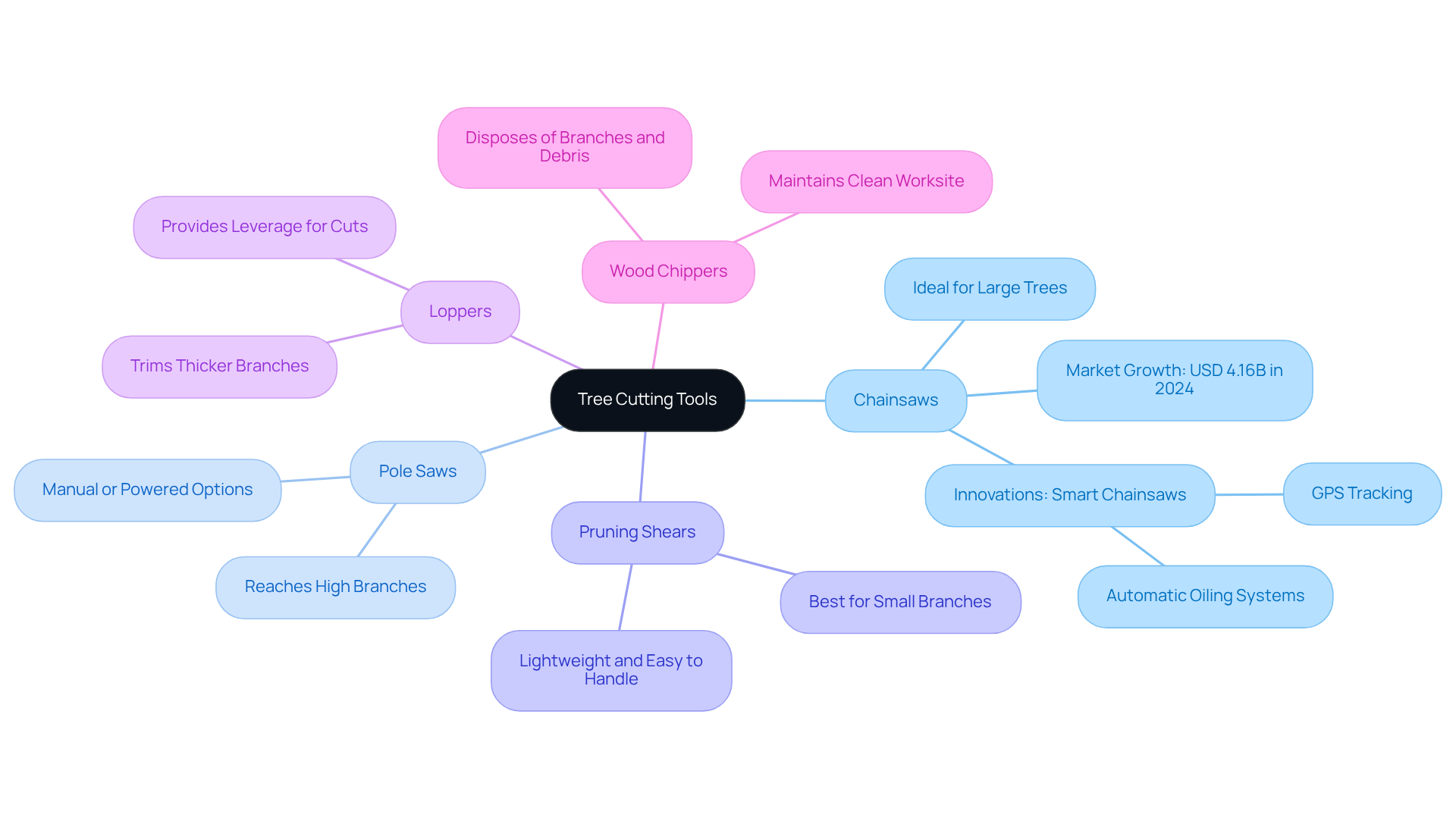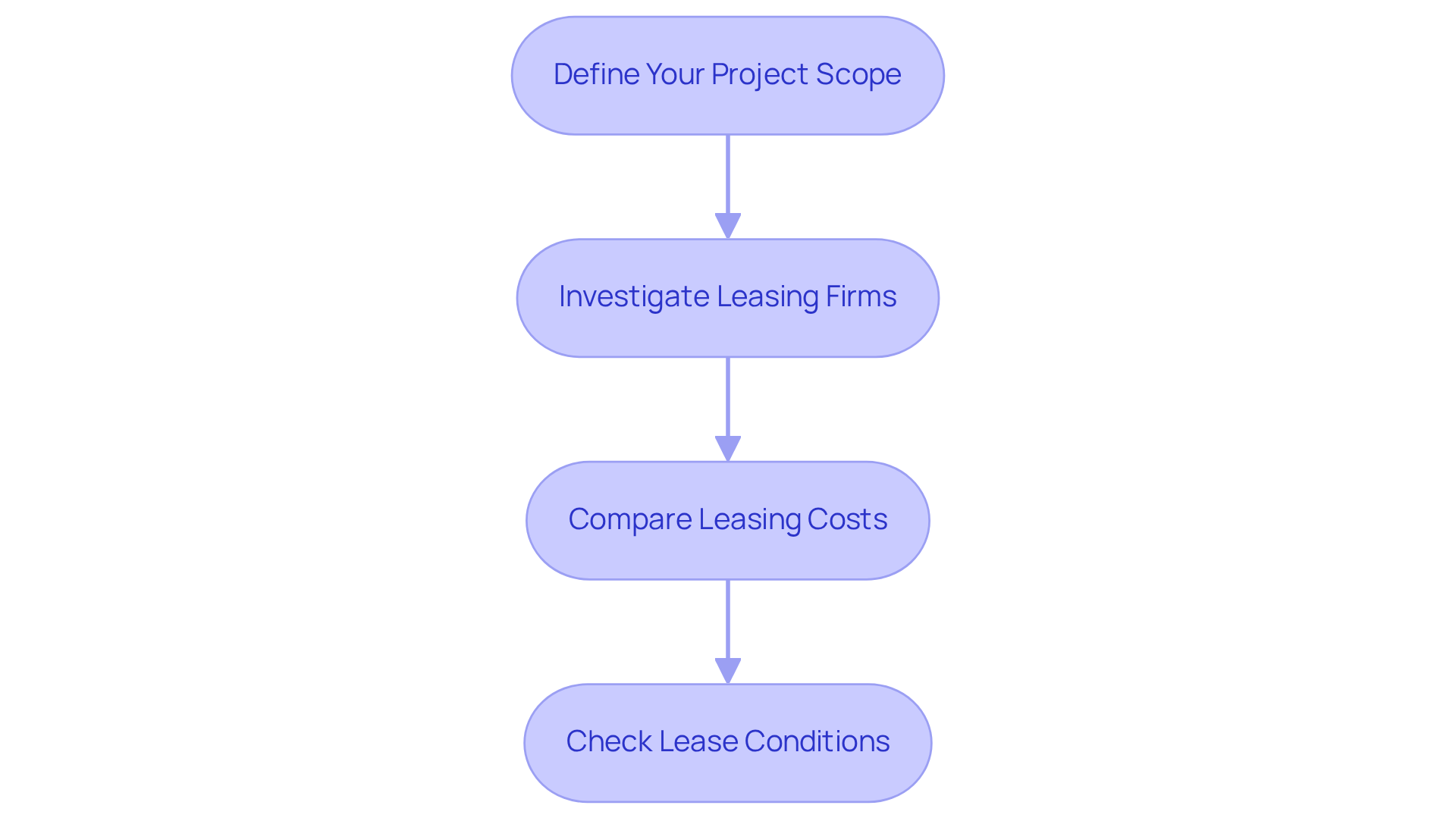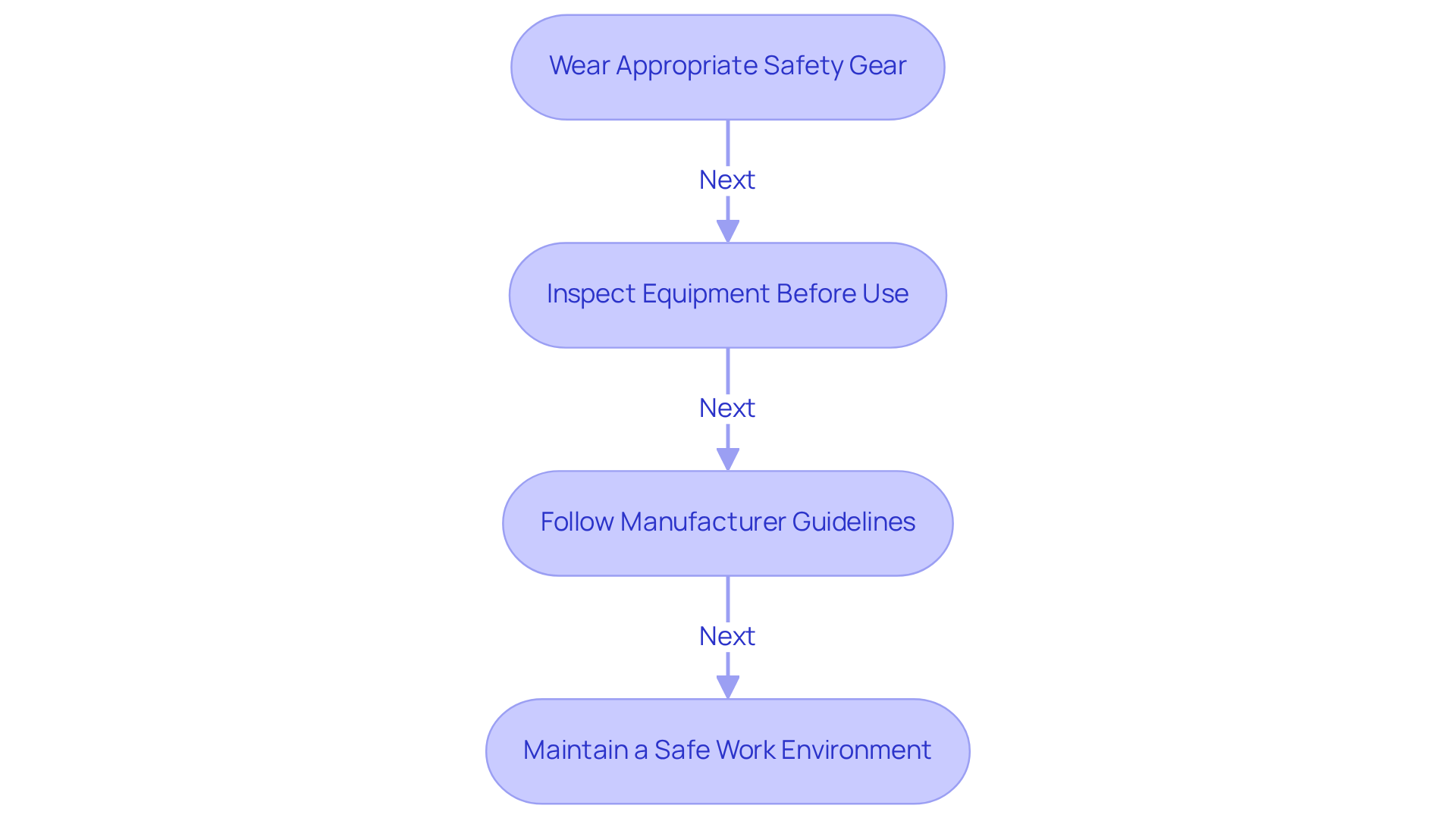Overview
Choosing the right tree cutting tool rental requires a thorough understanding of the various tools available, an assessment of your project requirements, and a strong emphasis on safety and maintenance. Familiarizing yourself with specific equipment, such as chainsaws and pole saws, is crucial. Evaluating rental options involves clear steps that ensure you select the most suitable tools for your needs. Furthermore, prioritizing safety gear and conducting equipment inspections are essential to guarantee a successful and secure tree cutting operation.
Key Highlights:
- Familiarisation with tree cutting tools is essential for effective rental decisions.
- Chainsaws are suitable for cutting large trees and branches; the market is projected to grow significantly.
- Pole saws allow for cutting high branches without ladders, favoured by arborists.
- Pruning shears are ideal for small branches and detailed trimming due to their lightweight design.
- Loppers provide leverage for trimming thicker branches beyond the capacity of pruning shears.
- Wood chippers help in disposing of branches and maintaining a clean worksite.
- Evaluating rental options involves defining project scope, investigating leasing firms, comparing costs, and checking lease conditions.
- Safety gear such as helmets and gloves is crucial for protecting workers during tree cutting.
- Inspecting equipment before use is vital to prevent injuries from malfunctions.
- Following manufacturer guidelines ensures optimal performance and safety of rented tools.
- Maintaining a safe work environment reduces risks associated with tree cutting operations.
Introduction
Selecting the appropriate tree cutting tool rental can indeed be a formidable challenge, particularly given the vast array of options available today. Each tool, ranging from chainsaws to pole saws, fulfills a distinct role, making it imperative for individuals to comprehend their specific project requirements prior to making a selection.
Safety concerns and maintenance considerations are significant factors that must not be overlooked. So, how can one ensure the selection of the most suitable equipment while minimizing potential risks?
This guide explores the essential steps for navigating the tree cutting tool rental landscape, empowering readers to make informed decisions that enhance both efficiency and safety in their projects.
Understand Different Types of Tree Cutting Tools
Begin by familiarizing yourself with the various types of equipment available for tree cutting tool rental. Understanding tree cutting tool rental options is essential for effectively assessing your project needs and making informed rental decisions.
-
Chainsaws are ideal for cutting down larger trees and branches. Available in various sizes, it’s crucial to select one that aligns with your project scale. The global chainsaw market, valued at USD 4.16 billion in 2024, is projected to grow from USD 4.31 billion in 2025, reaching USD 5.68 billion by 2033, with a CAGR of 3.53% during the forecast period (2025-2033). Innovations such as smart chainsaws equipped with GPS tracking and automatic oiling systems are increasingly popular, enhancing operational efficiency and safety.
-
Pole Saws are perfect for reaching high branches without the need for a ladder. These versatile tools, available through tree cutting tool rental, can be manual or powered, making them favored by arborists for maintaining tree health.
-
Pruning Shears are best for small branches and detailed trimming. Lightweight and easy to handle, they are perfect for precision work. Arborists often recommend these tools for their ease of use in tight spaces.
-
Loppers are helpful for trimming thicker branches that are too large for pruning shears, providing the leverage necessary for more substantial cuts.
-
Wood Chippers are essential for disposing of branches and debris after cutting. They help maintain a clean worksite and are increasingly popular in leasing markets.
Incorporating real-world examples of tree cutting tool rental can further illustrate their practical applications in various projects. This knowledge empowers you to make confident choices when renting equipment, ensuring your pruning tasks are executed with professionalism and efficiency.

Evaluate Rental Options Based on Project Requirements
To evaluate rental options effectively, follow these essential steps:
-
Define Your Project Scope: Start by determining the size of the plants you need to cut and the extent of the work involved. This critical step will assist you in recognizing the essential equipment required for your project.
-
Investigate Leasing Firms: Next, search for trustworthy leasing companies that offer a diverse range of tree cutting equipment. Be sure to check their inventory and customer reviews to ensure their reliability and quality.
-
Compare Leasing Costs: Request quotes from various leasing companies. While comparing prices, consider not only the costs but also the condition of the equipment and any additional fees that may apply, ensuring you make an informed decision.
-
Check Lease Conditions: Finally, understand the lease agreement in detail, including the duration, maintenance responsibilities, and insurance coverage. It is crucial to ensure you are comfortable with the terms before proceeding with your rental.
By thoroughly assessing these factors, you can confidently choose the most appropriate rental options for your vegetation removal project.

Prioritize Safety and Maintenance Considerations
When considering tree cutting tool rental, prioritizing safety and maintenance is paramount for a successful operation.
-
Wear Appropriate Safety Gear: Always utilize personal protective equipment (PPE) such as helmets, gloves, goggles, and steel-toed boots. As Tim Greifenkamp, TreePro Program Manager, emphasizes, "Your people are your greatest asset. Investing in injury prevention protects your employees, reduces downtime and workers’ compensation claims, improves morale, and boosts your business’s bottom line." These items are essential for safeguarding against potential dangers, particularly when using power equipment.
-
Inspect Equipment Before Use: Conduct a thorough inspection of the tools prior to starting your project. Look for signs of wear, damage, or malfunction that could compromise performance. Data indicates that an estimated 648,100 individuals were treated in US hospital emergency departments for trimming- and pruning-related injuries during an 18-year study period, underscoring the necessity of thorough inspections. Routine equipment inspections are essential, as injuries associated with equipment malfunction are common in the care sector.
-
Follow Manufacturer Guidelines: Adhere strictly to the operating instructions provided by the tree cutting tool rental service. This includes proper handling, maintenance, and storage of the equipment to ensure optimal performance and safety.
-
Maintain a Safe Work Environment: Ensure the area surrounding the plant is free from obstacles and hazards. Awareness of your surroundings is critical, particularly when using power tools, as many accidents occur due to environmental factors.
By emphasizing safety and maintenance, you can significantly reduce risks and facilitate a smoother tree cutting process.

Conclusion
Selecting the appropriate tree cutting tool rental is crucial for executing any vegetation removal project with efficiency and safety. Understanding the diverse array of tools available, evaluating rental options tailored to specific project needs, and prioritizing safety and maintenance are essential steps that empower individuals to make informed decisions, ultimately contributing to their project's success.
This article underscores vital equipment such as:
- Chainsaws
- Pole saws
- Pruning shears
- Loppers
- Wood chippers
Each designed for specific tasks in tree cutting endeavors. It is imperative to define the project scope clearly, research reputable leasing firms, compare costs, and meticulously review lease conditions. Furthermore, the importance of safety gear, conducting equipment inspections, adhering to manufacturer guidelines, and maintaining a secure work environment cannot be overstated.
In conclusion, diligence in the selection and rental process not only boosts operational efficiency but also mitigates potential hazards. By embracing best practices in tree cutting tool rentals, projects can be completed with professionalism and care, fostering a safer and more productive environment for everyone involved.
Frequently Asked Questions
What are the different types of tree cutting tools available for rental?
The main types of tree cutting tools available for rental include chainsaws, pole saws, pruning shears, loppers, and wood chippers.
What is the primary use of chainsaws?
Chainsaws are ideal for cutting down larger trees and branches, and they come in various sizes to match the scale of the project.
What is the projected growth of the global chainsaw market?
The global chainsaw market, valued at USD 4.16 billion in 2024, is projected to grow to USD 5.68 billion by 2033, with a CAGR of 3.53% during the forecast period (2025-2033).
What innovations are being seen in chainsaw technology?
Innovations in chainsaw technology include smart chainsaws equipped with GPS tracking and automatic oiling systems, which enhance operational efficiency and safety.
What are pole saws used for?
Pole saws are used for reaching high branches without the need for a ladder and can be manual or powered, making them favored by arborists for maintaining tree health.
When should pruning shears be used?
Pruning shears are best for small branches and detailed trimming, making them ideal for precision work in tight spaces.
What is the purpose of loppers in tree cutting?
Loppers are used for trimming thicker branches that are too large for pruning shears, providing the necessary leverage for more substantial cuts.
Why are wood chippers important after cutting trees?
Wood chippers are essential for disposing of branches and debris after cutting, helping to maintain a clean worksite.
How can understanding tree cutting tool rental options benefit a project?
Familiarizing yourself with tree cutting tool rental options empowers you to make informed decisions, ensuring that your pruning tasks are executed with professionalism and efficiency.




